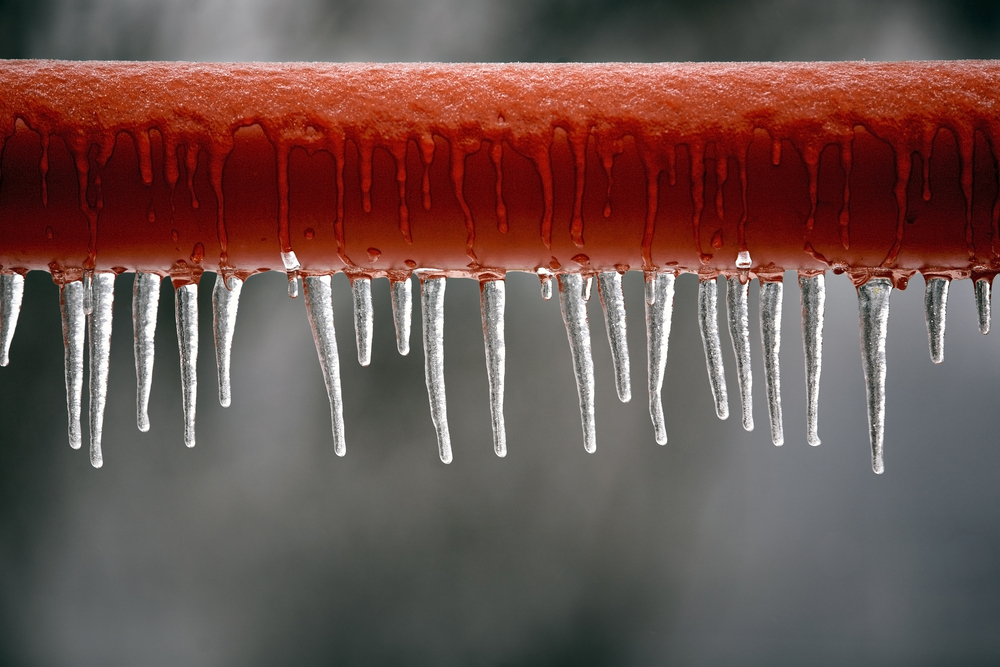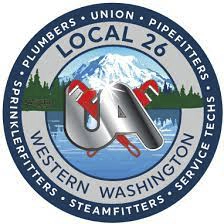When winter comes, many homeowners face a common problem — frozen pipes. If not addressed promptly, a frozen pipe can burst, leading to costly repairs and severe water damage. So, how do you prevent frozen pipes? Below, you will find some practical tips from our experienced Mount Vernon plumbers that will keep your plumbing system well-protected throughout the season.
Why Do Water Pipes Freeze?
Pipes freeze when the water inside them turns to ice due to low temperatures. This situation is particularly common in uninsulated spaces, such as basements, attics, and external walls. The ice blockage increases pressure within the pipe, and if left unchecked, it may cause the pipe to burst.
How to Prevent Frozen Pipes
Now that you know why pipes freeze in the first place, you can effectively prevent them from getting to this state. Follow these steps when the cold weather sets in:
Insulate Your Pipes
One of the most effective ways to prevent frozen pipes is by insulating them. Pipe insulation is a cost-effective solution that can save you from expensive repairs in the long run. For pipes exposed to the elements or located in unheated areas, consider using heat tape or thermostatically controlled heat cables to provide extra protection.
Keep Your Home Warm
Maintaining a consistent temperature in your home can help prevent frozen pipes. Ensure your thermostat is set to at least 55 degrees Fahrenheit, even when you’re away from home. Keeping kitchen and bathroom cabinet doors open can also help circulate warm air to pipes under sinks and appliances near exterior walls.
Seal Cracks and Openings
Check your home for any cracks or openings where cold air might enter and come into contact with your pipes. Use caulk or spray foam to seal these areas and prevent your pipes from freezing.
Let Your Faucets Drip
If you’re expecting a particularly cold night, let your faucets drip slightly. Running water, even at a trickle, helps prevent frozen pipes because the constant flow makes it harder for the water to freeze.
Drain Your Water System
If you’re going away for an extended period during the winter, consider draining your water system to prevent frozen pipes. Shut off the main water supply and then open all your faucets to drain the water.
Protect Your Outdoor Spigots
Outdoor hose bibs are particularly vulnerable to freezing temperatures. To protect these fixtures, disconnect garden hoses before the first frost and drain any remaining water. Water left in the hose can freeze, expand, and create pressure that damages both the hose and the spigot. Once the hose is removed, install insulated covers over your outdoor spigots. These covers are affordable, easy to use, and provide a layer of insulation to keep freezing air at bay.
For added protection, consider turning off the water supply to outdoor spigots from the interior shut-off valve and draining any remaining water from the spigot itself. This step ensures no water is left to freeze and expand, reducing the risk of damage to your plumbing system.
Safeguard Your Swimming Pool Supply Lines
To protect your pool’s water supply lines, drain and winterize your pool according to the manufacturer’s instructions before the cold weather sets in. If your pool has a separate shut-off valve for its water supply, make sure to turn it off during the winter months. Additionally, insulate pipes leading to or from your pool equipment using foam pipe insulation or heat tape for extra protection. Taking these preventive measures can save you from costly repairs and ensure your pool system is ready to go when warmer weather returns.
Responding to Frozen Pipes
Even with the best preventive measures, pipes can still freeze in extremely cold conditions. If you suspect a frozen pipe, it’s important to act quickly. Follow these steps right away:
- Firstly, shut off the main water supply to prevent water from flowing into the frozen area and increasing pressure within the pipe. Next, open the faucet connected to the frozen pipe. This creates an outlet for melting ice and steam, reducing the risk of the pipe bursting.
- Avoid using an open flame to thaw the pipe, as it can lead to a fire hazard. Instead, use safer methods, such as a hairdryer, an electric heating pad, or hot towels wrapped around the pipe. Start thawing near the faucet and slowly move towards the coldest section.
- If the frozen pipe is inaccessible or if you’re unable to thaw it, call a professional plumber immediately. Professionals have specialized tools and experience to safely thaw and repair frozen pipes.
Remember, prevention is better than cure. Insulate your pipes, seal cracks and openings, and maintain a warm indoor temperature to prevent pipes from freezing in the future.
Don’t Wait Until It’s Too Late
Preventing frozen pipes is much easier and less costly than dealing with a burst pipe. By following these tips and working with a professional plumber, you can protect your home and avoid unnecessary stress this winter.
If you’re concerned about frozen pipes, turn to the professionals at Skagit Plumbing. We offer a range of services designed to keep your plumbing system in top condition, from routine maintenance to emergency frozen pipe repairs. We also offer leak detection services so we can catch the repercussions of frozen pipes early. With our expertise and commitment to customer satisfaction, you can rest assured that your plumbing system is in good hands.
Frequently Asked Questions About Frozen Pipes
How can I tell if my pipes are frozen?
If your pipes are frozen, you might notice reduced or no water flow from your faucets. Additionally, you may observe frost on the exterior of exposed pipes or hear unusual sounds, like banging or clanking, when you turn on your water. In some cases, frozen pipes can emit a strange smell, as trapped air and ice may prevent normal drainage.
What should I do if I discover a frozen pipe?
The first step is to turn off your main water supply to prevent further pressure buildup, which could cause the pipe to burst. Next, open the affected faucet to allow any water or steam to escape as the ice melts. Then, carefully apply heat to the frozen section of the pipe using an electric hair dryer, heating pad, or warm towels, starting near the faucet and working your way back to the frozen area.
Can frozen pipes burst?
Yes, frozen pipes can burst. When water freezes, it expands and creates significant pressure inside the pipe. If this pressure exceeds the pipe’s capacity, it can cause the pipe to crack or rupture. This is why taking immediate action at the first sign of a frozen pipe is so crucial.
Are certain types of pipes more likely to freeze than others?
Yes, uninsulated pipes, pipes made of materials like copper or galvanized steel, and pipes located in unheated spaces (such as garages, crawl spaces, and outdoor living spaces) are more prone to freezing. Plastic pipes, such as PVC or PEX, are slightly more resistant to freezing due to their flexibility but are not entirely immune. Proper insulation and other preventive measures are essential for all types of pipes.
Is it safe to use a space heater or heat lamp to thaw frozen pipes?
Using a portable space heater or heat lamp can be safe as long as you exercise caution, never leave it unattended, and keep the heat source away from flammable materials. Always monitor the heater while it’s in use and ensure it’s placed in a stable position to avoid accidents.
Should I leave my faucet dripping all winter to prevent pipes from freezing?
You don’t need to leave faucets dripping all winter, but it’s a good preventive measure during particularly cold nights or when temperatures drop below freezing. A slight, consistent trickle of water can relieve pressure in the pipes and make it less likely for water to freeze.




